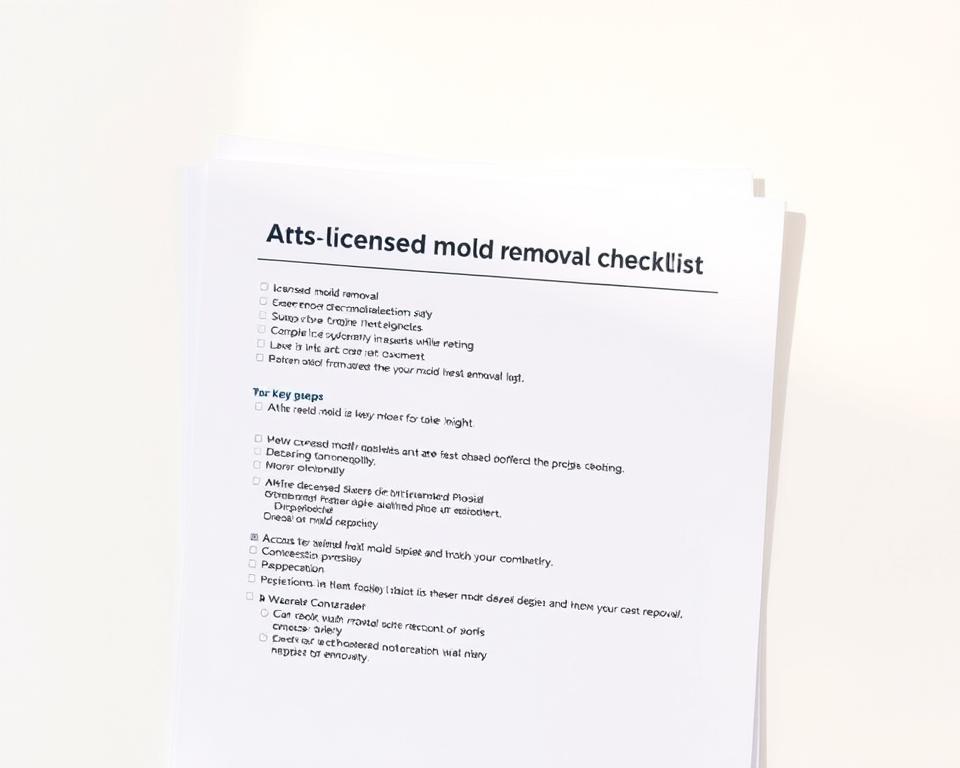Did you know 1 in 10 Americans faces worsened breathing issues due to hidden spores in their homes? With 3.4 million U.S. households battling fungal growth, indoor air quality has become a silent crisis. Flooding and erratic weather patterns are accelerating this problem, creating ideal conditions for invisible invaders to thrive.
Choosing the right team to handle these hazards isn’t just about cleanliness—it’s about safety. Many homeowners unknowingly hire unprepared workers, leading to incomplete cleanup and recurring issues. Inadequate methods can leave behind toxins that linger in air ducts or crawl spaces for years.
This guide simplifies the process of vetting specialists. You’ll learn how to confirm certifications, verify insurance coverage, and ask the right questions before signing contracts. State-specific regulations and third-party testing protocols are also covered to ensure full compliance.
Key Takeaways
- Over 3 million homes currently face fungal contamination risks nationwide
- Weather-related moisture issues are causing a surge in indoor air quality concerns
- Proper specialist verification prevents health hazards and property damage
- Always confirm state-approved credentials and liability coverage
- Post-remediation testing ensures complete spore elimination
Licensed Mold Removal Contractor Checklist: Your Essential Guide
When dealing with fungal growth in your home, having the right tools to choose experts matters. This guide breaks down the selection process into clear, actionable steps. You’ll gain the knowledge to identify qualified teams that follow industry standards and prioritize safety.
What to Expect from This Checklist
This resource simplifies complex evaluation criteria. It covers:
- State-specific certification requirements
- Insurance validation techniques
- Post-cleanup testing protocols
You’ll learn how specialists should assess contamination levels and create remediation plans. Real-world examples show what proper documentation looks like.
How to Use This Guide Effectively
Start by reviewing local regulations for fungal treatment services. Compare multiple quotes while checking each company’s:
- Third-party accreditation status
- Work guarantees
- Equipment quality
Keep this checklist handy during consultations. It helps spot red flags like vague timelines or missing liability coverage. Always request before-and-after air quality reports.
Understanding Mold and Its Impacts
That faint earthy odor in your attic might signal more than stale air—it could reveal an active biological hazard. Fungal colonies thrive where visibility fails, creating dual threats to well-being and property stability.
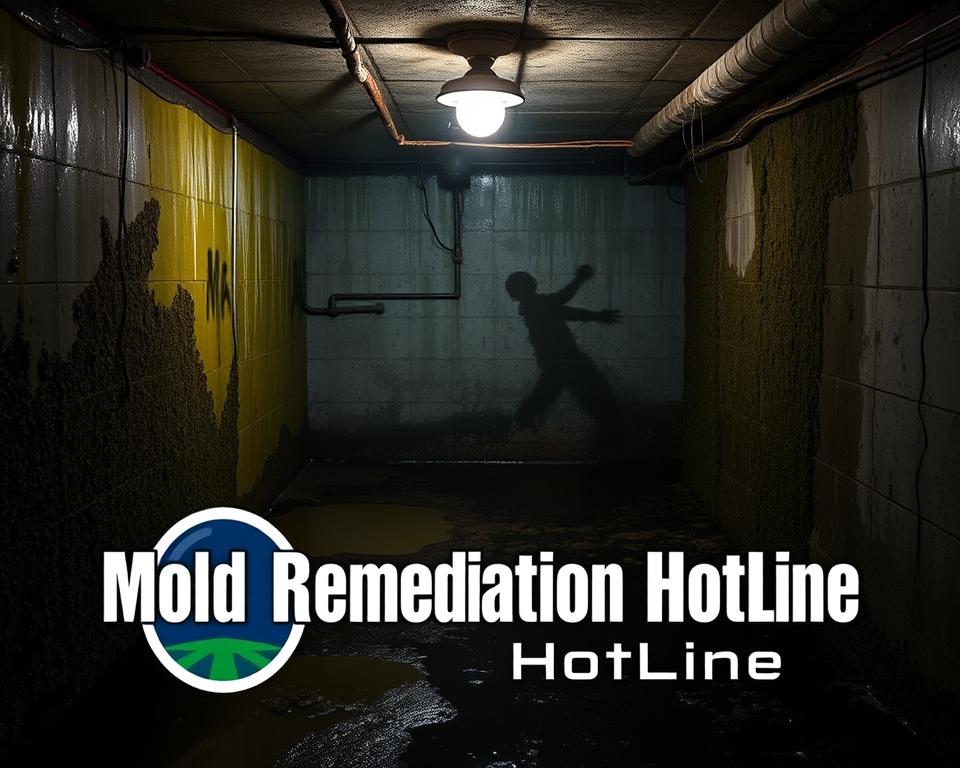
Mold Growth and Health Concerns
Three factors enable silent infestations: microscopic spores, organic materials like drywall, and moisture. Water intrusion acts as the ignition switch, transforming dormant particles into thriving ecosystems. The EPA notes, “Indoor microbial growth can develop within 48 hours of water exposure,” emphasizing the urgency of addressing leaks.
Vulnerable groups—including asthma sufferers and young children—often experience worsened symptoms first. Sneezing fits or persistent coughs might indicate spore presence before visible signs appear. Chronic exposure risks escalate when colonies release airborne irritants.
Structural Damage and Water Exposure
Wood rot and crumbling drywall frequently trace back to unchecked dampness. Insulation loses effectiveness as fungal networks penetrate porous materials. Left unresolved, these issues compromise load-bearing elements, potentially requiring major repairs.
Recent flood patterns have increased basement moisture levels nationwide. “What starts as a minor pipe drip can become a structural nightmare,” warns a building inspector from Florida. Timely intervention prevents secondary damage like warped flooring or electrical hazards.
Homeowners who recognize early warning signs—peeling paint, blistering surfaces—gain critical time to halt deterioration. Pairing this awareness with professional assessments ensures both safety and cost-effective solutions.
Steps to Assess Mold Damage
Accurate evaluation forms the foundation of effective fungal growth management. Proper identification of affected zones prevents overlooked hotspots and ensures targeted treatment plans. Start by gathering evidence of compromised spaces through methodical observation.
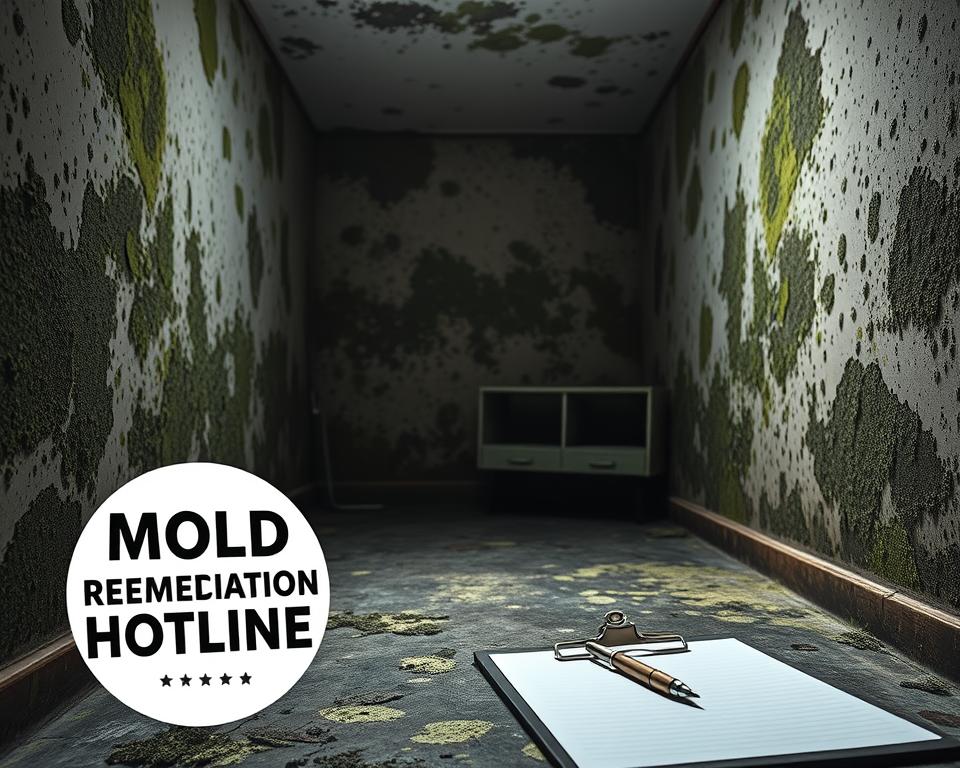
Documenting Visible Mold and Water Damage
Create a visual record using timestamped photos and written notes. Capture every discolored patch, warped baseboard, or damp drywall corner. Measurements matter—note square footage and material types for each compromised surface.
Organize findings in a digital folder with labeled images and descriptions. Include humidity readings near leaks or condensation points. This evidence supports insurance claims and helps specialists prioritize critical zones.
Inspection Strategies for Hidden Mold
Thermal imaging devices reveal moisture patterns invisible to the naked eye. Professionals scan walls, attics, and HVAC ducts to locate colonies thriving behind surfaces. “Infrared technology cuts guesswork by 80%,” notes a certified indoor air specialist.
Focus on high-risk areas like plumbing junctions and window frames. Compare temperature variations across building materials to pinpoint water intrusion sources. Pair these findings with air quality tests for complete analysis.
Engaging Professional Remediation Services
Expert intervention transforms hazardous environments into safe spaces. Specialized teams bring precision tools and proven methods that DIY approaches can’t match. This phase demands careful selection of partners who prioritize health and lasting results.
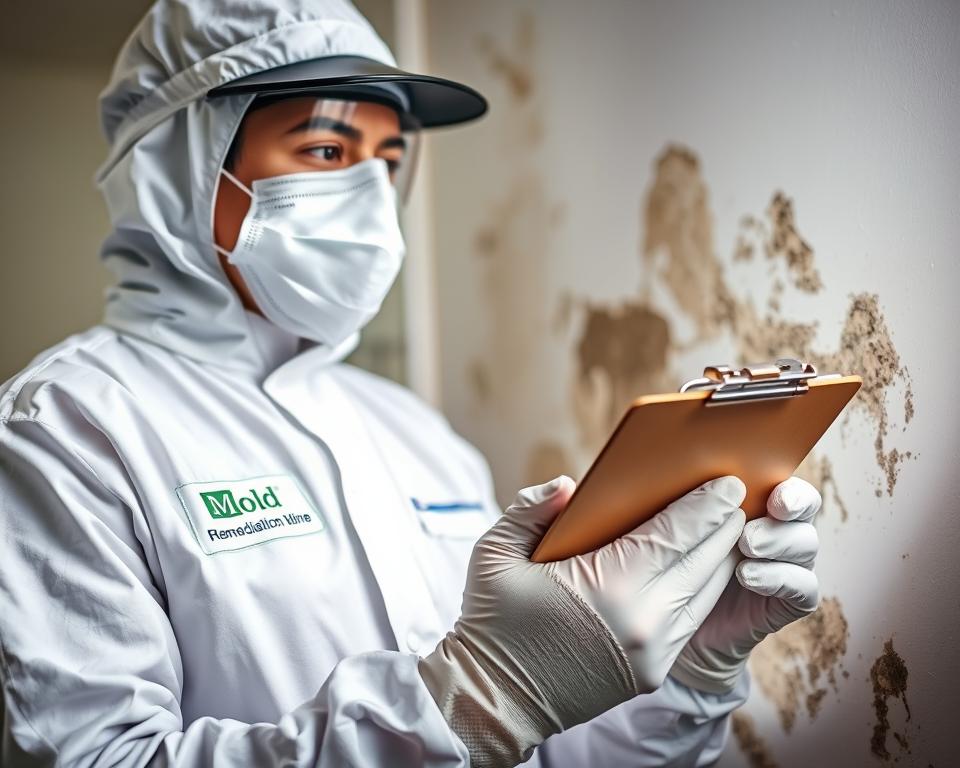
Choosing a Certified Mold Inspector
Credentials separate true experts from unqualified operators. Verify certifications like MICRO or MIS CMI through industry databases. Third-party accreditation proves technical competence beyond basic state requirements.
Request proof of completed projects matching your home’s size and issue complexity. Reputable inspectors provide sample reports showing moisture mapping and air quality analysis. Avoid firms offering both inspection and cleanup – impartiality matters.
| Service Feature | Importance | Verification Method |
|---|---|---|
| Industry Certifications | Ensures current training | Check IICRC or ACAC listings |
| Project Experience | Indicates problem-solving skills | Review 5+ case studies |
| Testing Protocols | Guarantees accuracy | Ask for lab partnerships |
Reviewing Detailed Remediation Plans
Effective strategies address both visible growth and hidden risks. Look for step-by-step containment methods and HEPA filtration systems. Prevention measures like vapor barriers should follow current EPA guidelines.
Demand written guarantees covering all work stages. “A proper plan includes post-cleanup air sampling,” notes an IAQA-certified specialist. Compare three proposals minimum to spot missing components or inflated costs.
Final approval should wait until receiving a signed scope document. This binds companies to their promised outcomes and protects against unexpected charges.
Detailed Documentation and Record Keeping
Documentation acts as your shield in post-disaster recovery efforts. Clear records transform complex situations into manageable processes. They provide proof of damage extent and professional interventions.

Maintaining a Comprehensive Inventory of Damage Areas
Start by cataloging every affected surface. Capture timestamped photos from multiple angles. Include measurements and material details for accuracy.
Create digital folders with labeled images and humidity readings. This organized approach helps specialists assess priority zones quickly. It also strengthens insurance negotiations.
Keep all receipts and inspection reports. “Proper paperwork prevents payment disputes,” advises a claims adjuster from Texas. Save emails with contractors and test results for future reference.
Update your records after each remediation phase. Compare before-and-after air quality tests. Follow state requirements for documentation retention periods.
Maintain a list of all repaired surfaces alongside repair dates. Check state guidelines for proper disposal records. Organized systems help track progress and verify completed work efficiently.
Navigating Your Insurance and Coverage Limitations
Home protection plans often hide critical details about biological hazards. Reviewing policy documents reveals coverage gaps that could leave you financially exposed during fungal outbreaks.
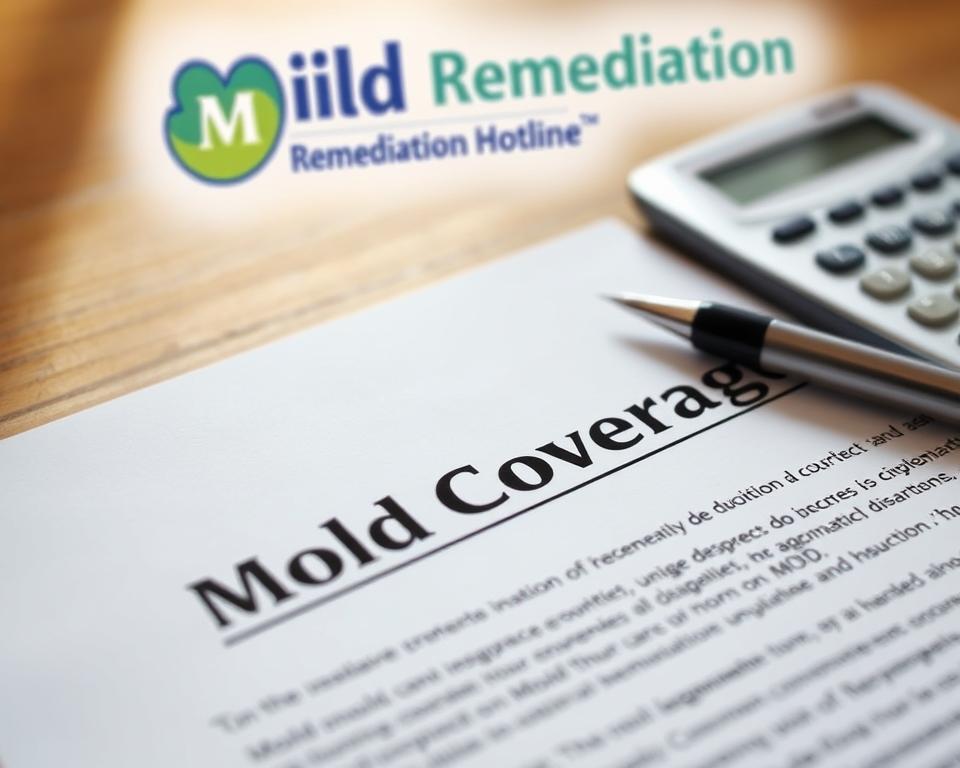
Understanding Policy Exclusions for Mold Damage
Most standard policies exclude coverage for long-term moisture issues. Water intrusion from neglected roof leaks or plumbing failures frequently voids claims. Insurers argue these situations result from preventable maintenance lapses.
State regulations vary significantly. Coastal regions often have stricter exclusions due to higher humidity risks. Always check for clauses about “gradual damage” or “pre-existing conditions” in your paperwork.
Tips for a Smooth Claims Process
File reports within 48 hours of discovering problems. Adjusters prioritize claims with timestamped evidence like:
- Lab-confirmed spore test results
- Repair invoices showing immediate action
- Before-and-after humidity readings
Create a claims folder with these documents:
| Document Type | Purpose | State Requirements |
|---|---|---|
| Inspection Reports | Proves damage extent | Notarized in 12 states |
| Remediation Plans | Shows professional approach | EPA guidelines apply |
| Payment Receipts | Supports reimbursement | Digital copies accepted |
“Photos tell the story numbers can’t,” advises a New York claims specialist. Capture water stains on structural elements and damaged personal items. Persistent follow-ups with adjusters often yield better settlements.
Essential Tips for a Successful Mold Inspection
Modern homes often conceal biological hazards that require specialized detection methods. Accurate identification of contaminants demands more than visual checks—it needs systematic approaches tailored to your property’s unique layout and history.
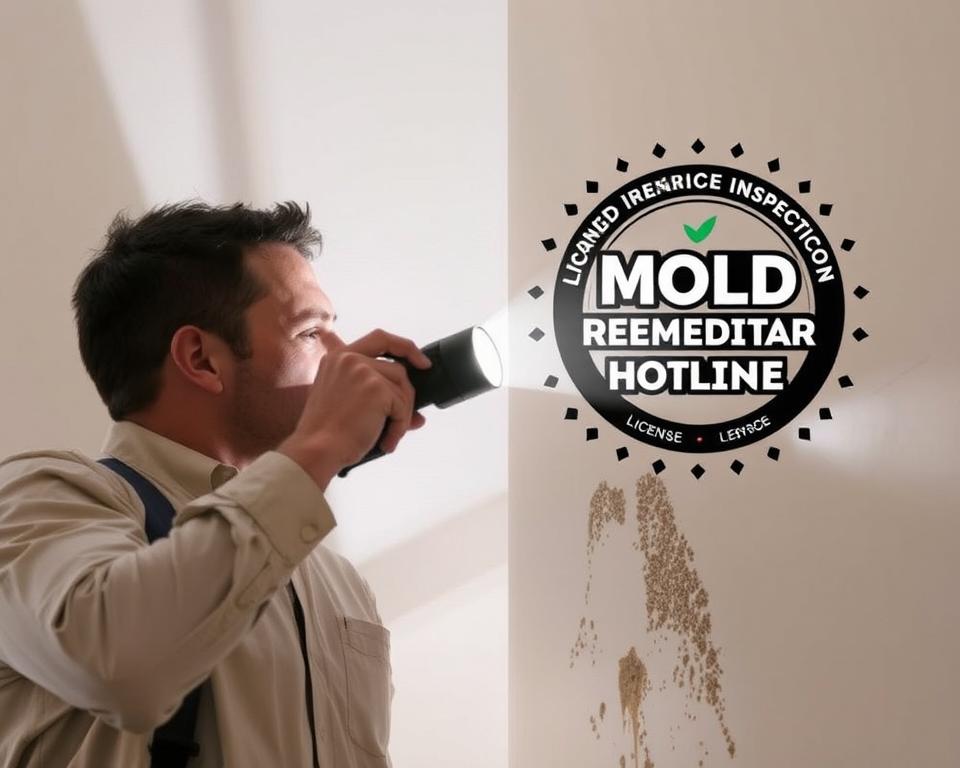
Effective Sampling and Testing Strategies
Experts design sampling plans based on airflow patterns and moisture sources. Property-specific strategies might combine surface swabs, air cassettes, and wall cavity probes. Calibrated equipment like moisture meters and infrared cameras ensures reliable data collection.
Third-party labs analyze samples using EPA-approved methods. This step confirms spore types and concentration levels. Avoid DIY test kits—they often miss hidden colonies or misidentify species.
Leveraging Professional Expertise for Accuracy
Certified inspectors interpret results through the lens of local building codes and health guidelines. They identify which contamination levels require immediate action versus monitoring. “A 10% variance in humidity readings can completely change remediation priorities,” notes an IAQA-certified specialist.
Advanced tools like particle counters and thermal imaging detect issues behind walls. Professionals then create clear action plans prioritizing high-risk zones. Their reports often include:
- Contamination severity rankings
- Material-specific treatment recommendations
- Prevention measures aligned with state regulations
Proper documentation from these assessments becomes crucial for insurance claims and future property transactions. Always request digital copies with timestamps and lab certifications.
Expert Advice from Industry Leaders
Seasoned professionals reveal game-changing strategies for tackling hidden biological threats. Their collective wisdom bridges technical knowledge with practical homeowner solutions.
Insights from Certified Inspectors
Advanced detection tools separate adequate assessments from exceptional ones. Thermal cameras and hygrometers now standardize moisture mapping. “Clients who demand lab-verified reports avoid 90% of repeat issues,” notes a 15-year veteran from Arizona.
Prioritize specialists familiar with regional architecture. Coastal experts understand crawl space ventilation differently than desert technicians. Always verify their grasp of local building codes and weather patterns.
One inspector shares: “We train homeowners to spot early warning signs—discolored grout lines or condensation patterns.” This knowledge empowers residents between professional visits. Pair these observations with annual air quality checks for proactive defense.
